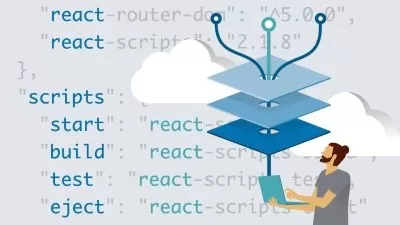Principles of Secure Coding
Chris B Behrens
3:08:34
Description
Building Security in from the Beginning
What You'll Learn?
- Learn about the essential concepts of all security
- Understand how data becomes compromised
- Understand the particulars of coding defensively
- Know the OWASP Top Ten Security Issues for 2021
Who is this for?
What You Need to Know?
More details
DescriptionWe all want security in our work, and in our processes, but - secure against what? What does security mean, and how do we achieve it? In this course, we'll explore this question in depth.
We'll begin with a primer on security concepts such as authentication and authorization, and the related concepts of encoding and encryption. We'll talk about the role of version control in secure software development, and the importance of keeping secrets out of version control. We'll talk about two security horror stories, one from reality, and one fictional one from YouTube legend Tom Scott.
We'll move on to secure coding practices using C# as our example platform but with an eye towards wide applicability. We'll move on to the practices of keeping data secure, and how sensitive data ends up in the wrong hands.
We'll conclude the course with a survey of the OWASPÂ Top Ten security issues for 2021. By diving into these common issues, we'll gain a strong appreciation for the thinking that leads to security problems year in and year out.
I hope you'll join me as we explore how to change our thinking to be secure from the start with the Principles of Secure Coding course at Udemy.
Who this course is for:
- Software developers and DevOps professionals
We all want security in our work, and in our processes, but - secure against what? What does security mean, and how do we achieve it? In this course, we'll explore this question in depth.
We'll begin with a primer on security concepts such as authentication and authorization, and the related concepts of encoding and encryption. We'll talk about the role of version control in secure software development, and the importance of keeping secrets out of version control. We'll talk about two security horror stories, one from reality, and one fictional one from YouTube legend Tom Scott.
We'll move on to secure coding practices using C# as our example platform but with an eye towards wide applicability. We'll move on to the practices of keeping data secure, and how sensitive data ends up in the wrong hands.
We'll conclude the course with a survey of the OWASPÂ Top Ten security issues for 2021. By diving into these common issues, we'll gain a strong appreciation for the thinking that leads to security problems year in and year out.
I hope you'll join me as we explore how to change our thinking to be secure from the start with the Principles of Secure Coding course at Udemy.
Who this course is for:
- Software developers and DevOps professionals
User Reviews
Rating
Chris B Behrens
Instructor's Courses
Udemy
View courses Udemy- language english
- Training sessions 51
- duration 3:08:34
- Release Date 2022/12/01
















